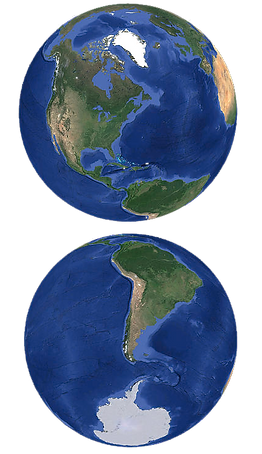We see far greater risk of massive irreversible sea level rise (SLR) at 2°C, on a scale of 12–20 meters or more in the long term. The climate record of the Earth over the pat few million years is quite clear:

Sea Level Rise from Ice Sheets
We see far greater risk of massive irreversible sea level rise (SLR) at 2°C, on a scale of 12–20 meters or more in the long term. The climate record of the Earth over the pat few million years is quite clear:

Sea Level Rise from Ice Sheets

Sea Level Rise from Ice Sheets
We see far greater risk of massive irreversible sea level rise (SLR) at 2°C, on a scale of 12–20 meters or more in the long term. The climate record of the Earth over the pat few million years is quite clear:

• At today’s temperature of 1°C over pre-industrial, we have locked in about 1–3 meters of sea-level rise over the next centuries from loss of mountain glaciers and a portion of the polar ice sheets, even if we could hold temperatures at 1°C.
• Risks rise substantially at 1.5°, with the Earth showing a pattern of 6–9 meters compared to today when it was this warm in the past; coming from additional loss of Greenland and most of the West Antarctic Ice Sheet (WAIS).
• 2°C however shows a much sharper rise: between 12–20 meters as the new global sea level, locked in over millennia. This is because both the WAIS and Greenland melt nearly completely at a sustained 2°C; with vulnerable portions of East Antarctica also posing a threat; and up to 25 meters occurring between 2° and 3°C.
• Most seriously, periods of time well in excess of 2°C – especially if we reach 3°C, 4°C or more, which is our current emissions pathway – increase the risk, speed and potential inevitability of the above changes. The rate of change can itself become a risk: at the end of the last Ice Age, sea levels rose by up to 4 cm per year, and 12–14 meters in the space of a few centuries.
The good news: these processes, especially the collapse of the West Antarctic Ice Sheet can be slowed if temperatures remain close to 1.5°, allowing far more time for communities to adapt to the rising seas. Much of the WAIS may have passed a threshold of collapse sometime between 2010 and 2015, at around 0.8°C; but at lower temperatures such as 1.5°C, this collapse can be slowed to perhaps thousands of years, rather than (in the worst projections) just a few centuries. Even at today’s 1°C, Greenland’s ice loss has doubled in the past 20 years; and Antarctica’s has tripled.